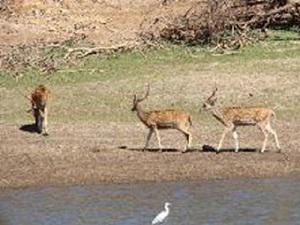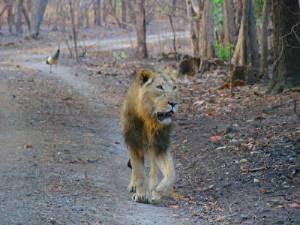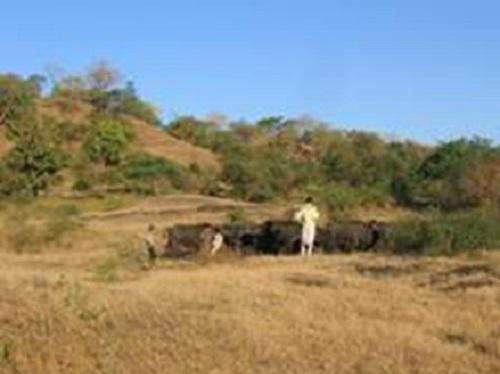Vijayan Sundararaj
This project aims to study how chital predation risk and habitat selection is influenced by presence of livestock population due to predation by critically endangered Asiatic lions in the Gir Protected Area.

Human settlements are common in many protected areas of India and have been accepted as an integral part of the ecosystem. These settlements support large livestock populations that act as an alternative prey for big carnivores. Traditionally, research focused mainly on human-wildlife conflicts resulting from livestock kill, as well as direct competition between livestock and wild herbivores or shared grazing land. Though direct competition is important, the presence of livestock along with wild prey can cause “apparent competition” in which two victim species interact negatively via their shared predators. Shared predation is widespread phenomenon in natural communities and influence habitat selection and ecological separation between species.

Asiatic lion.
The Gir protected area in Western India, harbours the critically endangered Asiatic lion. This park has a population of approximately 12,000 livestock in the sanctuary area. Although chital deer is the common wild prey for lions in this system, severe lion predation on livestock has led to severe human wildlife conflicts. Research this far has focussed on direct competition for food resources and habitat between livestock and Chital deer, but never on apparent competition. Higher predation risk for chitals can cause serious trade-offs between feeding where lions are active and surviving long enough to reproduce. Thus, apparent competition could be one of major factors affecting chital abundance and habitat selection in areas where it coexists with livestock. An understanding of this relationship will aid in conserving the lion-chital predator prey relationship and can be used to develop strategies to reduce human-lion conflict. I will use theories from foraging behaviour and habitat selection to determine:

Gir livestock.
1) influence of lion population on chitals in habitats with and without livestock,
2) how livestock influence the foraging behaviour and habitat use of chital deer, and
3) patterns of chital distribution and abundance in some major habitats which can assist in its better management as the main prey for Asiatic lions in Gir Protected Area.